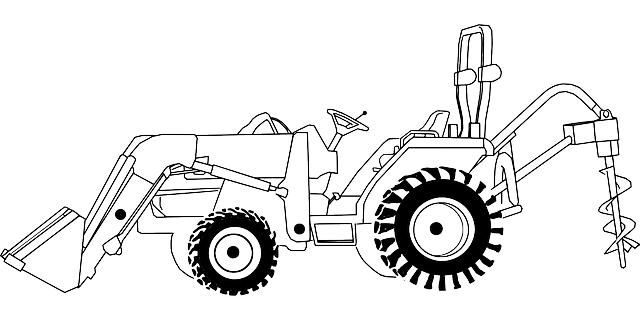To keep your lawn tractor running smoothly, it's essential to understand and maintain your lawn tractor battery properly. These batteries, composed of lead plates in sulfuric acid solution, are critical for starting the engine and overall functionality. Signs of depletion or faults, like a weak crank or flickering lights, should prompt immediate maintenance. Regular terminal cleaning and secure fastening prevent many issues. Knowing the battery's lifecycle and its impact on tractor performance helps with efficient problem-solving. Always follow the manufacturer's guidelines for charging and maintenance to ensure longevity and peak efficiency.
When troubleshooting, start with a visual inspection of the battery and terminals for damage or corrosion. If the battery seems fine, use a battery tester to check its charge level. If depleted, charge it according to the manufacturer's instructions. Clean any corroded terminals, tighten loose wires, and if the battery still fails to function correctly after these steps, consider replacing it with the correct type as per your user manual or with professional guidance.
Regular maintenance is key: clean terminals can resolve many issues, while consistent charging and monitoring water levels in lead-acid batteries prevent discharge-related damage. Storing your lawn tractor indoors protects against weather extremes, and keeping up with these maintenance strategies will ensure that your lawn tractor's battery remains dependable, ready for use, and has a prolonged lifespan.
Keeping your lawn tractor in top condition is key to an efficient and smooth operation. A central element to this maintenance is understanding and properly managing your lawn tractor’s battery. This article provides a comprehensive guide on the 7 Best Ways to Troubleshoot Lawn Tractor Battery Issues, covering everything from the basics of battery function to step-by-step troubleshooting for common problems. Learn how to diagnose and fix issues effectively, and discover preventative maintenance tips that will keep your lawn tractor’s battery charged and ready for action. Whether you’re a seasoned gardener or new to lawn tractor ownership, these insights will ensure your machine is always prepared for the task at hand.
- Understanding Your Lawn Tractor Battery: The Basics
- Step-by-Step Battery Troubleshooting for Lawn Tractor Issues
- Diagnosing and Fixing Common Lawn Tractor Battery Problems
- Preventative Maintenance to Keep Your Lawn Tractor Battery Charged and Ready
Understanding Your Lawn Tractor Battery: The Basics

When encountering issues with your lawn tractor battery, it’s crucial to have a foundational understanding of how this power source functions within your equipment. A lawn tractor battery typically comprises lead plates submerged in a solution of sulfuric acid, which generates electrical current when charged. This chemical reaction is the heart of your lawn tractor’s performance, as it provides the necessary energy to start and operate the tractor. To effectively troubleshoot battery problems, one must first recognize the signs of a depleted or faulty battery. Common indicators include a sluggish engine crank, a tractor that won’t start, or lights that dim when you attempt to engage the starter. Regular maintenance, such as keeping the terminals clean and ensuring the battery is securely fastened, can prevent many issues before they arise. Understanding the lifecycle of your lawn tractor battery and the role it plays in the overall functionality of your equipment will enable you to address any malfunctions promptly and effectively, ensuring that your lawn care tasks proceed without interruption. Additionally, familiarize yourself with the manufacturer’s specifications for charging and maintenance, as adhering to these guidelines can extend the life of your battery and maintain optimal performance.
Step-by-Step Battery Troubleshooting for Lawn Tractor Issues

When encountering issues with your lawn tractor battery, a systematic approach can save time and ensure effective resolution. Begin by visually inspecting the battery for any obvious signs of damage or corrosion on the terminals. If the battery appears intact, proceed to check its charge level using a reliable battery tester. This step confirms whether the battery holds a sufficient charge or is completely discharged. Should the battery be discharged, consider charging it using a suitable battery charger designed for lawn tractor batteries. Ensure you follow the manufacturer’s recommendations for both charging times and types.
If charging does not resolve the issue, examine the battery’s connections and terminals. Loose or corroded terminals can impede electrical flow and prevent the tractor from starting. Clean any corrosion from the terminals with a baking soda paste and a brush, then securely tighten any loose connections with a wrench, taking care not to over-tighten and damage the terminal posts. After these steps, attempt to start the lawn tractor again. If the battery still fails to hold a charge after these initial troubleshooting steps, it may be time to replace the battery altogether. Always consult your lawn tractor’s user manual or a professional for guidance on selecting the correct replacement battery to maintain optimal performance of your equipment.
Diagnosing and Fixing Common Lawn Tractor Battery Problems

When encountering issues with your lawn tractor battery, a systematic approach to diagnosis and repair is essential. Begin by inspecting the battery terminals for signs of corrosion or loose connections, as these can significantly impact performance. Use a wire brush to gently clean the terminals and ensure they are tightened properly. Check the battery’s charge level using a reliable voltmeter; a fully charged lawn tractor battery should read between 12.4 and 12.7 volts. If the voltage is below this range, it may be necessary to recharge the battery.
Should the battery hold a charge but still not start the tractor, examine the alternator or generator to ensure it’s charging the battery while in operation. Additionally, test the battery with a load tester to verify if it can maintain a charge and properly power the starter motor. If the battery fails this test, it might be nearing the end of its lifespan and require replacement. Regular maintenance, including cleaning terminals, keeping the battery charged, and monitoring for any signs of wear or damage, can prevent many common lawn tractor battery problems, thus extending the life of your battery and ensuring your tractor operates reliably.
Preventative Maintenance to Keep Your Lawn Tractor Battery Charged and Ready

Regular upkeep of your lawn tractor’s battery is pivotal to its longevity and performance. To maintain a fully charged state, it’s crucial to routinely inspect the battery terminals for corrosion and clean them as needed. A buildup of corrosion can hinder the electrical connection, leading to reduced battery charge and overall tractor function. Additionally, ensuring that the water levels in lead-acid batteries are adequate is essential; distilled water should be added to cover the lead plates without overflowing, typically once a month during active use. Storing your lawn tractor indoors, particularly in a cool, dry place, can also protect the battery from extreme temperatures and environmental factors that contribute to wear and tear. Regular charging after every use, especially during the off-season, keeps the battery from discharging completely, which can damage it over time. By following these preventative maintenance practices, you can significantly extend the life of your lawn tractor battery and ensure it’s ready for use whenever you need it. Keep in mind that consistent usage patterns paired with proper charging and maintenance will help prevent issues before they arise, making your lawn tractor experience smoother and more reliable.
When encountering issues with your lawn tractor battery, a comprehensive understanding of its components and typical malfunctions is invaluable. This article has outlined seven effective methods for troubleshooting these problems, from diagnosing common battery faults to implementing preventative maintenance strategies. By following the detailed steps provided, you can ensure that your lawn tractor’s battery remains robust and operational, enhancing the efficiency and longevity of your lawn care equipment. Remember, with the right knowledge and proactive care, maintaining a healthy lawn tractor battery is both achievable and essential for your outdoor tasks.



